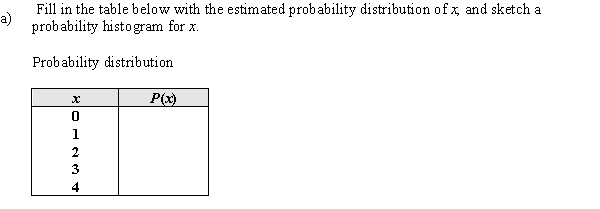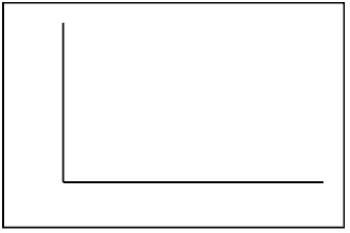During World War II The German forces launched "flying-bombs" (missiles) against London. In a study of the effectiveness of these flying-bombs, a researcher divided the south of London into 575 squares of area equal to 0.25 square km and counted the number of these squares that had sustained exactly k hits. The data for 0 - 4 hits in an area is given in the table below.  Let the random variable x = number of flying-bombs hitting in a randomly selected square in south London.
Let the random variable x = number of flying-bombs hitting in a randomly selected square in south London.  Probability historgram
Probability historgram  b) Using your estimated probabilities in part (a), estimate the following: i) P(x = 1), the probability that 1 flying bomb hit in a randomly selected square. ii) P(x < 3), the probability that fewer than 3 flying bombs hit. iii) P(x ≥ 3), the probability that at least 3 flying bombs hit.
b) Using your estimated probabilities in part (a), estimate the following: i) P(x = 1), the probability that 1 flying bomb hit in a randomly selected square. ii) P(x < 3), the probability that fewer than 3 flying bombs hit. iii) P(x ≥ 3), the probability that at least 3 flying bombs hit.
Correct Answer:
Verified
View Answer
Unlock this answer now
Get Access to more Verified Answers free of charge
Q3: At the University of Tough Love, good
Q4: A State Dept. of Education is writing
Q5: The distribution of all values of a
Q6: The standard normal distribution has a mean
Q7: If random variables x1 and x2 are
Q9: At the College of Warm & Fuzzy,
Q10: For a discrete random variable x,
Q11: A random variable is discrete if the
Q12: If x is a random variable, and
Q13: For every random variable, P(a ≤ x
Unlock this Answer For Free Now!
View this answer and more for free by performing one of the following actions

Scan the QR code to install the App and get 2 free unlocks

Unlock quizzes for free by uploading documents